
The University of California has opposed the SAT and ACT for decades, and they were on track with a 5-year plan to phase out standardized tests. The first 2 years would be test optional and then the next 3 years would be test blind (by 2025). But they just announced that because testing students with disabilities both during the pandemic (with online options) and even after the pandemic (for moral reasons) is intrinsically unfair, they are banning UC admissions officers from considering SAT or ACT scores for admission and financial aid decisions this year.
This ban was just announced on Monday so we’ll need to wait to see what the UC system decides to do for the 2021 application cycle. UC Berkeley had already established a test blind policy, while UCLA and a few other UCs had offered a test-optional policy. If a student chooses NOT to submit scores, this decision will not hurt their applications. However, the students who wish to submit scores (students with high scores) will have their scores considered in the overall review of their applications.
Hmm. Students who are naturally gifted at taking standardized tests or those with families who can afford private tutoring will definitely be at an advantage in test-optional reviews. Evaluating applications this year will require a keen eye from the admissions point of view. They will need to understand how the student’s school offered courses and grades last semester, how the student’s family situation affected their studies, why their AP or SAT/ACT scores were not submitted, and the general qualifications of each student without standardized test scores and many without grades for spring 2020.
Many colleges across the US are making SAT/ACT scores optional this year. Some will probably continue this the policy after the pandemic passes, but others will go back to requiring them because of contracts established between the colleges and the College Board or ACT. Seems like standardized testing is on its way out when reviewing students’ aptitude.

The University of California has opposed the SAT and ACT for decades, and they were on track with a 5-year plan to phase out standardized tests. The first 2 years would be test optional and then the next 3 years would be test blind (by 2025). But they just announced that because testing students with disabilities both during the pandemic (with online options) and even after the pandemic (for moral reasons) is intrinsically unfair, they are banning UC admissions officers from considering SAT or ACT scores for admission and financial aid decisions this year.
This ban was just announced on Monday so we’ll need to wait to see what the UC system decides to do for the 2021 application cycle. UC Berkeley had already established a test blind policy, while UCLA and a few other UCs had offered a test-optional policy. If a student chooses NOT to submit scores, this decision will not hurt their applications. However, the students who wish to submit scores (students with high scores) will have their scores considered in the overall review of their applications.
Hmm. Students who are naturally gifted at taking standardized tests or those with families who can afford private tutoring will definitely be at an advantage in test-optional reviews. Evaluating applications this year will require a keen eye from the admissions point of view. They will need to understand how the student’s school offered courses and grades last semester, how the student’s family situation affected their studies, why their AP or SAT/ACT scores were not submitted, and the general qualifications of each student without standardized test scores and many without grades for spring 2020.
Many colleges across the US are making SAT/ACT scores optional this year. Some will probably continue this the policy after the pandemic passes, but others will go back to requiring them because of contracts established between the colleges and the College Board or ACT. Seems like standardized testing is on its way out when reviewing students’ aptitude.
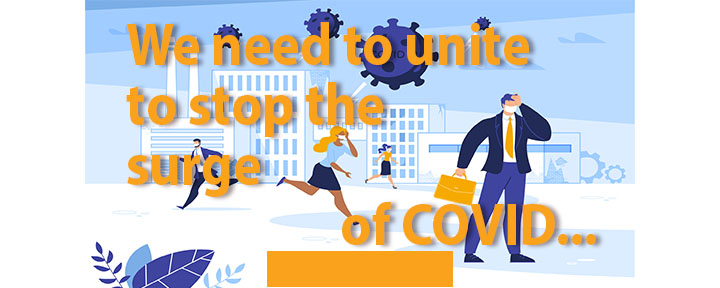
This virus is alive and spreading. Thinking that it’s just going to go away in different regions while the rest of the states and countries continue to see new outbreaks is naïve. It surprises me that intelligent people think that they can gather in groups smaller than 10 and that they’re safe. Seriously? Just meeting with ONE PERSON is not safe today. You don’t know who that person has been with during the last 2 weeks (girlfriends, coworkers, teachers), what surfaces they have touched (grocery stores, gas stations, door knobs), if they are asymptomatic, or if they may have a false-negative coronavirus test result. Take-away message: YOU DON’T KNOW WHERE THEY’VE BEEN!
The University of Arizona just analyzed student dorm sewage on campus and found one dorm tested positive. They tested the 311 students who lived and worked in the dorm, and found 2 asymptomatic students. These students were quarantined. Had the university not stepped up their proactive analysis of student sewage, the students could have spread the virus all over campus.
Colleges are opening up across the United States with great intentions of keeping students safe. They expect students to follow an honor code with rules about the numbers of people they party with and the 6-foot distance to keep between themselves. I wrote a blog about why college students’ prefrontal cortexes aren’t fully developed until age 25 so they don’t have the reasoning skills they need to make smart decisions. When college students engage with roommates, classmates, professors, and staff on campus, and then they visit friends in the local community, travel home to see family for holidays, and zigzag their way through public transportation and on airlines, they may become the reason that we see a huge rise in COVID cases and death this fall and winter.
The “rules” that everyone loosely considers when they’re out in public are just general rules. The 6-foot rule is for people who are not breathing hard. In other words, they’re not walking or running, they’re not exercising, and they’re not laughing or talking loudly. My daughter Nicole (an ER doc) says that the safe distance is really 10 feet, not 6 feet.
I find it ridiculous that it’s okay to gather with less than 50, 25, or even 10 people. Say one of those people is asymptomatic or has been tested but had a false negative reading, that person could most certainly infect the other 49, 24, or 9 people in that “safe group.” As long as we are circulating with anybody outside of our households, we are part of the problem. We are all spreading the coronavirus if we have contact with other people. Period.
Hindsight is 20/20, and if I would have known what I know today and had the influence to do this, I would have shut down the entire world for 2-4 weeks. If everyone would have stayed home and only hospitals, law enforcement/first responders, and absolutely essential businesses stayed open (with daily testing and quarantining), we could have stopped the coronavirus from spreading. We would all be back to work and school today, and we would have bounced back economically – we now know we can survive a 2-4 week shut down.
This has been an enlightening year for me. As the eternal optimist, I thought that we would have the coronavirus under control in a few weeks, or months. But what I’ve learned is that when we don’t understand a threat like a pandemic, we get scared. This fear drives our next steps that make us think we’re invisible; we won’t get the coronavirus so we’ll forge forward! – or – we think we’re going to die; we need to protect ourselves by staying away from everyone. Then, we look for leaders or information that support our beliefs. By hearing what we want to hear, we’re not making sound decisions about how to stop the spread of COVID-19. So today, decisions are being made for political and financial reasons, not for humanitarian reasons.
SOURCE

Young people used to have the choice between college degrees and vocational training (certificates), but over the past 30+ years, the pressure has been on students to get their bachelor’s degrees. This created a void in vocational training. Research proved that college graduates fared better economically – earning $30,000 more than non-college graduates annually. But during the coronavirus pandemic, there has been a shift back towards skills-based online credentials.
As we face the worst recession in a century and a call for social justice, there is a surge in online certificates, industry certifications, apprenticeships, micro-credentials, boot camps, and lower-cost online master’s degrees. People are looking at online and non-degree programs to build necessary skills that align with what corporate America needs today.
Google just announced new online career-certificate programs similar to their popular IT-support specialist online certificates. These certificates will be considered the equivalent of a four-year degree in those subject areas. IBM, Facebook, Salesforce, and Microsoft are also creating their own short-term, skills-based credentials. Other tech companies are dropping degree requirements for some of their jobs.
In order to make these certificate programs transfer to dependable employment in the future, these credentials need to be stackable (able to add more certificates in related fields) and portable (skills can be used in other industries). The verdict is out on whether or not certificate programs will compete with real college degrees when the pandemic passes and the economy bounces back. I think employers will want college graduates who have a stronger overall academic foundation, who have built a network of college buddies, and who have cultural literacy that is aligned with corporate mucky mucks.
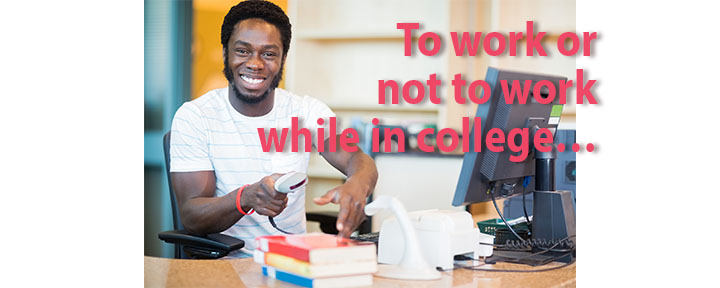
College students who work part time (15 or fewer hours per week) are more likely to graduate within 6 years (67%) than students who didn’t work at all (40%), students who worked 16-34 hours a week (35%), and those who worked more than 35 hours per week (16%). Hmm. Those who worked on campus were twice as likely to earn a degree within 6 years (66%) than those who worked off campus (28%).
According to a federal study, when students work on campus less than 15 hours a week, they have the highest graduation rate. So parents, if you think that paying tuition, room and board, and entertainment costs will give your child more time to study and increase their chance of graduating, think again. Instead, give them a little real-life responsibility earning their spending money and having a real job. That mindset seems to play an important part in their overall college experience.
I remember working with parents who insisted on making their child’s job simply studying and passing classes. In theory that might make sense, but I found that not having to prepare food (meal plan), clean house (janitors in dorms), earn money for entertainment (beer pong), or manage their expenses (Daddy please add money to my account!), creates an unrealistic world for the student.
On the other hand, students who work 16 hours a week and up to full time, are so immersed in the real world that they often succumb to employment-related pressures like covering other employee’s shifts, working overtime, and being so exhausted from work that their studies slip. These students often have the additional stress of paying tuition and living expenses. They often become seduced by the lure of seemingly large paychecks and then take a break from classes or drop out.
So parents, encourage your children to get very part time work on campus. They’ll become more responsible, they’ll appreciate the cost of their education, and they’ll earn that coveted degree!

No matter where you stand on the political spectrum, we all need to vote this November. There’s a lot of confusion about where and how to vote, but it’s really simple. Check out this chart to see how to vote in your state. If you are a college student who will be moving out of state for college or taking classes online from home, register to vote and determine exactly how you’re going to vote NOW.
Colleges are supposed to help students get their student IDs and give lists of students to local polling locations. They are supposed to make it easier for students to cast their ballots while they’re away from home. The key words here are “supposed to,” and considering the pandemic, financial losses, minimal administrative staff, and chaos as colleges prepare for this upcoming semester or quarter, don’t count on them to make sure that every student vote gets counted.
Instead, every college student who doesn’t have a regular polling place or a reliable plan, should request a mail-in ballot or an absentee ballot. Check this site, to determine what you need to do to ensure that you have a valid ballot that will be counted in November. Vote early and check to see if your vote-by-mail ballot was received by your County Elections Dept. It’s up to you to take the easy steps to vote so you’ll be all set come election day.
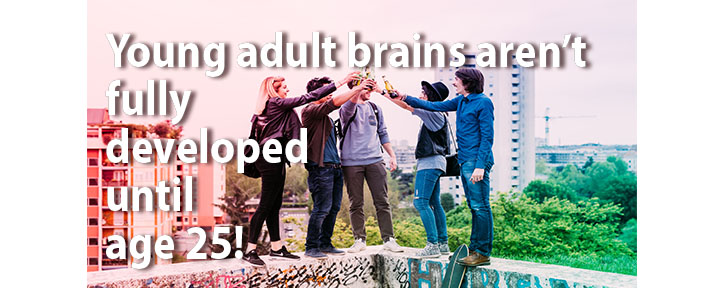
We have become an entitled society, so it should be no surprise that college students are disregarding COVID-19 guidelines that they previously agreed to in order to have the luxury of living in the dorms and taking classes on campus. Colleges that invited students back to campus for fall semester over the past 2 weeks are seeing a surge in COVID-19 cases. From frat and sorority parties to large gathering on campus to bar-hopping, many college students think they are invincible and that they don’t need to heed the rules set by the college administration.
As a result, colleges are scolding groups of students for their reckless and selfish behavior. Some colleges are closing up dorms and sending students home. One thing for sure: college students can and will get COVID if they don’t seriously change the way they socialize and study.
Laurence Steinberg, a psychology professor at Temple University and expert on adolescent behavior says that young adults tend to think more of “immediate rewards rather than long-term consequences.” They need to socialize and even if they understand the severe consequences of breaking the COVID-19 rules, they don’t think they’ll get caught. Sound familiar?
At Boston University, students are permitted to have small gatherings with friends, but warned to not share drinks, to social distance, and to use hand sanitizer. They prefer to have phone sex, keep consistent hook-up buddies, and discuss COVID-19 risks. It seems that Gen Z students have the “f*ck it” attitude about their personal responsibility to other students and the community.
According to the Journal of Adolescent Health, the young adult’s prefrontal cortex – the part of the brain that is responsible for rational thinking — is not fully developed until they reach age 25. That’s 3 years after they graduate from college. So why would we put young adults in a college setting where they need to restrain themselves without their parents and teachers overseeing their activities? We’re simply setting them up to get COVID and to infect their friends, professors, college staff, and the communities they live in.
Maybe we should all stay home until we get the coronavirus under control, have safe treatment plans, and have tested vaccines that can save lives.
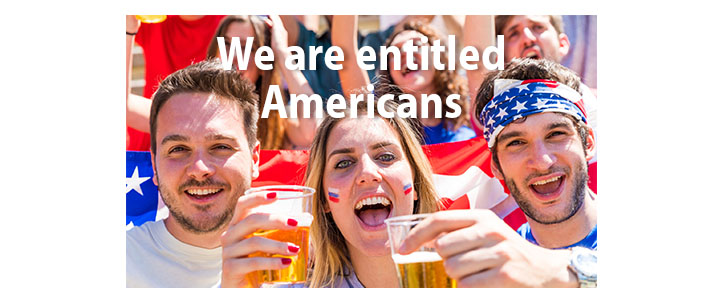
Our forefathers, who forged their way to the new America where they hoped for a life filled with opportunities they didn’t have in their native countries, sacrificed so much to improve their lives. We Americans were true pioneers and we could do anything. And, we did. We became the most innovative country in the world and everyone copied and followed our lead.
But today, that drive to achieve our dreams is no longer our inspiration. Instead, people (corporations and politicians) are taking care of themselves and not looking out for our collective future. College students party in frat houses, take spring vacations, and live their lives as if the coronavirus wasn’t threatening millions of lives. Now businesses are opening up with complete disregard for their clients’ safety. Even with evidence that when we socialize without protection (masks), we spread this virus, businesses reopened their doors.
The result: America is now the number one leader in COVID-19 cases and deaths in the world.
Why?
Because today’s America isn’t comprised of pioneers like our forefathers. We have become too comfortable – entitled – and shortsighted. We don’t need to work the fields to make sure we have enough food to make it through the winter. We don’t like others to tell us what to do or to take away our freedoms. We have become so busy that we don’t have time to read or research. We choose platforms and hate others who don’t share our ideologies.
But worst of all – we aren’t making the sacrifices we need to make now in order to stop this pandemic, improve our economy, and protect our future. We all need to grow up and work together – not apart – to survive and thrive.
So stop whining. Stop blaming others. Stop hating things you don’t understand. Instead, isolate yourself from everyone, wear a mask when going out, and sacrifice a little so that we can all survive and move on.
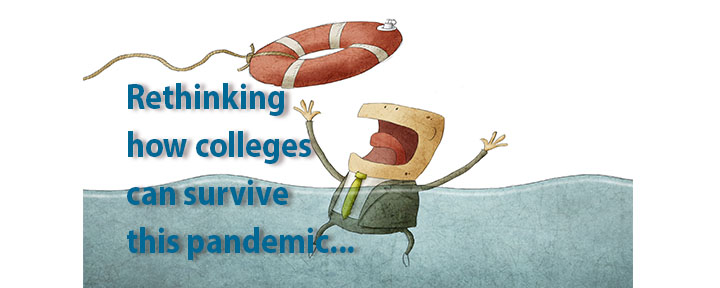
When colleges sent their students home last March 2020, no one knew that they wouldn’t return to campus in just a few weeks. Colleges, schools, parents, and students were making decisions and predictions every 3-4 weeks until summer rolled around. Since then, parents and students have demanded refunds for dorms and meals they couldn’t use or consume, and then they asked for partial refunds due to the online instruction that we all know was not up to par.
Now colleges are making decisions about opening their campuses up in the fall, winter, or spring based on finances. Well, of course they care about their faculty, students, and staff but without tuition and funds for housing and meal plans, many colleges are facing financial ruin. Colleges are scrambling to improve online lectures, interactions with students, socially-distanced labs, and the college experience. They are remodeling dorms, bathrooms, classrooms, lecture halls, and athletic facilities. All of this takes millions of dollars that colleges weren’t expecting to dole out in a short window of time.
Many colleges are offering 10% off tuition and student activities fees for fall term, and most aren’t charging for room and board. This helps all students, but not all college students are in the same financial place. Some colleges are doubling awards for existing scholarships so students who obviously need financial aid will get twice as much during this pandemic. This helps even the playing field because those who can pay $50,000 a year for tuition without assistance probably don’t need a 10% refund. Right?
I’m hoping that all colleges offer the financial support that low-income students need so that they don’t drop out of school. These low-income students are largely black and Hispanic. Colleges need funds to keep their doors open and to do the remodeling and restructuring to bring students back to campus again. Seems to me that an equitable way to accomplish this is to charge high-income students full tuition and room/board acknowledging that these funds will help the college prepare for on-campus classes for all.
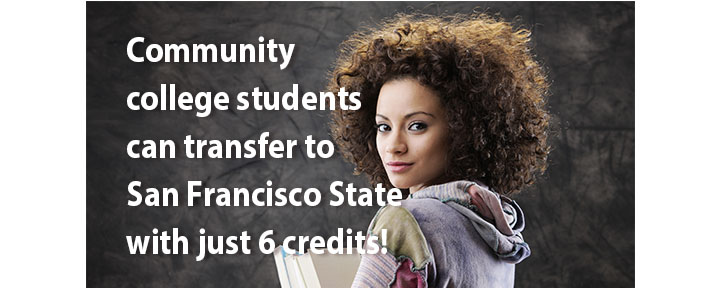
With a gap year and our crippled economy, the silver lining is that some colleges are changing policies and admitting more students. San Francisco State University just announced that they will accept transfer students with as few as 6 credits! Normally they require community college students to complete 2 full years of courses and apply to transfer with a minimum of 60 credits. The new rules mean that students could take one fall semester of courses at a community college and then transfer spring semester to SFSU.
Thanks to thousands of students who will not be attending the online classes this fall, the admissions dept has opened up these 2500 spaces to transfer students. All that’s required for eligibility under these pandemic times are the following:
High School GPA: B- average
Community College GPA: C average
SAT/ACT: not required
Required course completion: (1) basic writing; and (2) basic math
So the silver lining is a huge bonus for students of color and students who are the first in their families to go to college. SFSU is partnering with City College of San Francisco to implement these new guidelines and to help community college students get into a 4-year university. All community college students will be considered, and other California State Universities may follow suit. Stay tuned!
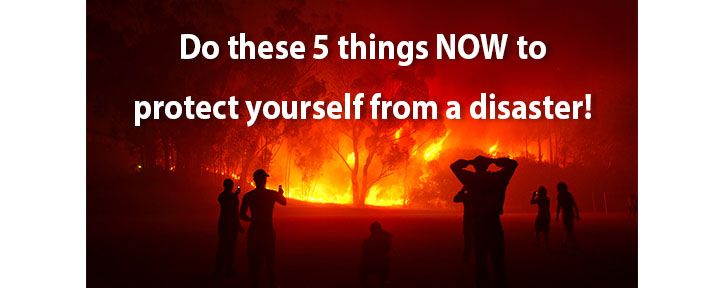
Here we are again in the middle of a perfect storm: Fires are raging in California after Sunday’s lightning thunderstorms that sparked fires amidst some of the hottest days we’ve had on record. This is unnerving as we’re already dealing with fears of COVID-19, loss of jobs, displaced students, and isolation from friends. This is the best time to fill out my Micro-Community Disaster Plan and Information packet to prepare your family now. Here are 5 proactive things you can do now to give you more control over the many things that feel completely out of our control today.
#1: REACH OUT TO YOUR NEIGHBORS
Put your differences aside, and email or visit with your neighbors today. Check in with them to update their contact information so you can help if they need support in evacuating or taking care of pets if they’re not at home.
#2: CREATE A FAMILY DISASTER PLAN
Select a meeting place to avoid going in circles searching for one another should there be an evacuation or a disaster. Make sure all family members understand that they should meet at this location and wait for everyone to arrive. Choose an out-of-state (or out-of-area) person to be the contact person. That way, if cell phones aren’t working or your internet is down, your contact person can retrieve messages and keep everyone informed of the status of each family member.
* Disaster Plan
#3: MAKE YOUR GO-BAGS
Gather the things you absolutely need to survive, and place them in a backpack or suitcase. Think: medications, personal items, clothing, water, food. Be prepared as evacuation orders don’t give you much time. If evacuation isn’t eminent, then create a Go Bag for your car and your house so you’ll always be ready.
#4: SIGN UP FOR CODE RED
Go to your alert notification systems and sign up for alerts. That way, you’ll be alerted to evacuation orders and you can start preparing by gathering your family, pets, and Go Bags. You can also help your neighbors by giving them a heads up and helping those who are non-ambulatory.
#5: PROTECT YOUR HOUSE
Move wooden or flammable items that are within 5 feet of your house. That means that cord of wood next to the garage, wooden picnic tables, old planter boxes, and other things. Ideally, move them 100 feet from your house but do whatever works for your home and property.
If time permits, remove dead branches and lower limbs on trees that are within 100 feet of your house. This could reduce the chance the wildfires would make their way to your homes. Weedwhack dense areas to create a firebreak. Clean out gutters and debris that have collected on your roofs. Learn more here.
Whether you’re waiting for evacuation orders or you just haven’t had time to prepare for disasters, let this be a wake-up call to get started. Share this with family and friends, and encourage them to do prepare now.
